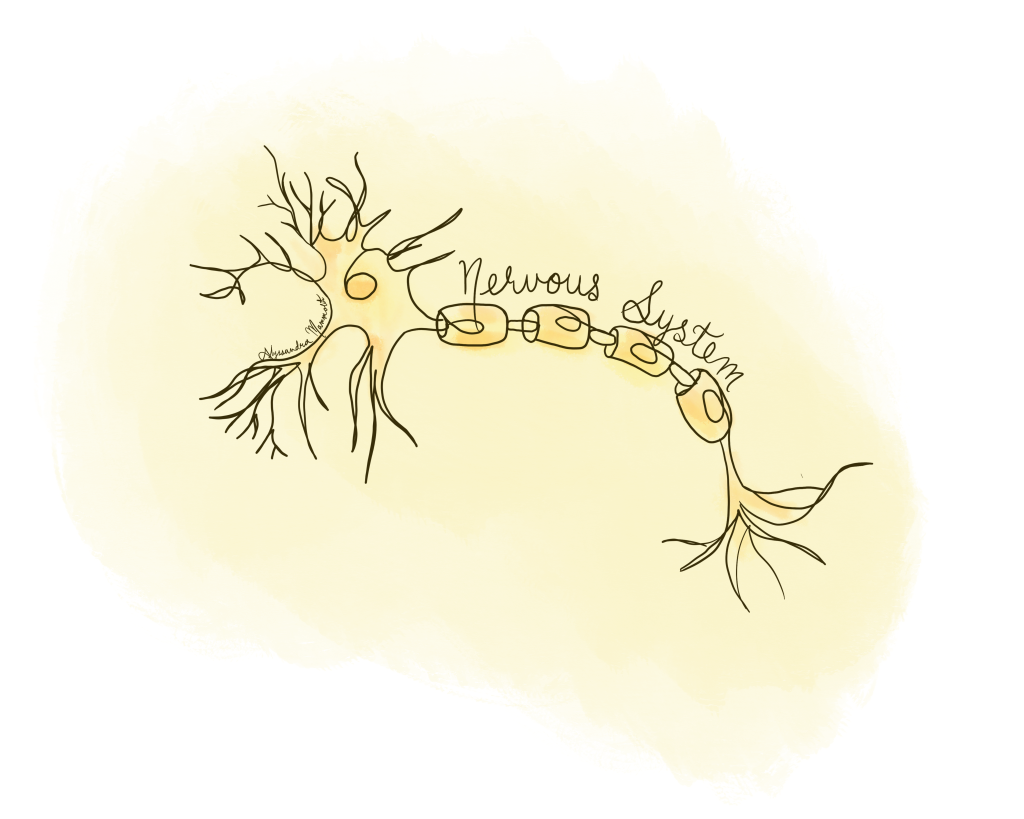Chapter 5: Nervous System

Imagine working in a busy kitchen and you accidentally put your hand on the hot stove. Without thinking, you instinctively remove your hand. Thanks to your nervous system, this reflex is able to protect you. The painful sensation from your hand on the hot stove sends a signal through your spinal cord then back down to your muscles to pull your hand back. Every single movement you make or sensation you feel is a product of communication between billions of neurons in your nervous system.
This chapter will build on what we covered in Chapter 4 to understand how the nervous system directs the human body to move and interact with the world. We will dive into the anatomy of the spinal cord and vertebrae, specifically how they provide support and structure to the body. Then, the communication of the central and peripheral nervous systems will be discussed, and finally, we’ll discuss the parts of the brain.
Learning Goals
By the end of this chapter you should be able to:
- Identify general structures of the nervous system
- Analyze the vertebra and its role in the nervous system
- Identify the spinal cord and its role
- Identify the brainstem and spinal nerves and their purpose in sensation and motor
- Identify the cerebellum and roles in the nervous system
- Locate the diencephalon and its components
- Identify the cerebrum and its components
- Identify the meninges and the blood brain barrier
- Identify the peripheral nervous system and its divisions
- Analyze the role of integrative systems and their position in the nervous system
- Identify the major plexuses of the body and their role
- Explore the reflex arc

